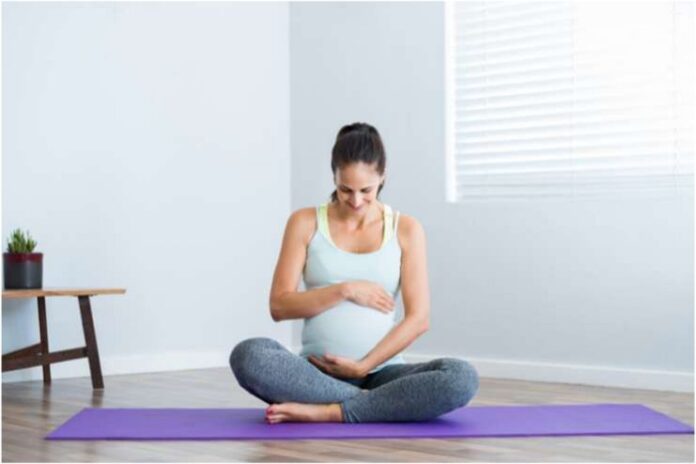Pregnancy is a time of transformation for both the mother’s body and the developing child. Maintaining an active lifestyle during this time is critical because it can improve mental and physical health. However, mothers should exercise carefully, ensuring their movements are safe and healthy for themselves and their children. Exercise can lessen common discomforts, including back pain, edema, and exhaustion, improving mood and sleep quality.
However, how can expectant mothers exercise safely? This article is devoted to helping you navigate this thrilling adventure by providing customized workout suggestions to maintain your fitness, energy, and self-assurance.
Understanding Safe Exercise during Pregnancy

Section 1: Importance and Benefits
Frequent exercise has several advantages that can improve the comfort and enjoyment of pregnancy. Women who exercise throughout pregnancy may experience various health benefits, such as enhanced mood, weight control, and fitness maintenance. Frequent exercise can also lower the risk of pregnancy-related problems such as pre-eclampsia and pregnancy-induced hypertension.
Generally, being physically active during pregnancy is probably okay if you were active before becoming pregnant. If it is comfortable and no other health issues indicate otherwise, your healthcare physician will advise you to continue being active.
There are several mental and physical advantages of exercising during pregnancy. Regular exercise during pregnancy has several advantages, including:
- More vitality and enhanced fitness
- Decreased pelvic and back pain,
- Preparing for the physical demands of labor,
- Preventing and treating urine incontinence
- Quicker recovery following labor
- Better posture,
- Greater capacity to handle the physical demands of parenthood.
Section 2: Recommended Exercises
Being active during pregnancy may help this fantastic journey in a way that supports mental and physical health. Pregnancy is a time of magnificent transition. However, not all workouts provide the same benefits, particularly during pregnancy. Here are some suggested workouts that expectant mothers can modify for each stage of pregnancy to stay in shape safely.
Using a Fitness Ball to Squat: Even for a short period during labor, squatting helps expand the pelvis and gives the baby more space to pass through the delivery canal. Squatting during labor can be made simpler by practicing throughout pregnancy. Try using a fitness ball for squats.
Step-ups: You’ll need a little step stool to perform a step-up. Another option is to use a stairway’s bottom step. Perform this exercise next to a wall or railing that you can use for support or additional balance if necessary. Move your body onto the step, mainly using the first foot to elevate yourself. Raise your other foot. Then, take one step back to where you were before. Every time you step up, switch up your first foot.
Exercises to Strengthen Your Stomach: As your baby grows, you can notice that your lower back becomes more hollow, which can cause back pain. These exercises can help with backache, which can be an issue during pregnancy, and strengthen the muscles in the stomach (abdominal region).
Yoga and Pilates During Pregnancy: These mild yet efficient forms of exercise have the added advantage of encouraging mindfulness and relaxation. Prenatal yoga’s main components are stretching, breathing exercises, and mild movements that increase flexibility, reduce stress, and promote relaxation. It is beneficial for lowering stress, calming the mind, and preparing the body for labor.
Exercises for the Pelvic Floor: These exercises strengthen pelvic floor muscles, which endure significant tension during pregnancy and childbirth. From the pubic bone (in front) to the end of the backbone (spine), the layers of muscles that make up the pelvic floor stretch like a supportive hammock.
Exercise Guidelines and Tips

Section 3: Safety Guidelines
If you were active before getting pregnant, it is probably acceptable to continue exercising during pregnancy. Numerous workouts are acceptable while pregnant, but it’s crucial to exercise caution and avoid going overboard.
Many people became concerned when Olympic volleyball star Kerri Walsh Jennings revealed that her physician had given her the “all-clear” to play competitive volleyball while pregnant.
The American Pregnancy Association would have advised against this due to the possibility of collision with another player, the ground, or portions of the court. But it’s crucial to draw attention to one critical fact in her doctor’s advice.
“The amniotic sac, which is tucked away inside the uterus, which is encircled by your body’s organs, muscles, and tissues, contains fluid that surrounds your unborn child. It gives your developing child a rather safe atmosphere.”
Pregnancy safety advice to take into account:
- You should gradually begin an exercise routine and take care not to overdo it if you are starting it to improve your health throughout your pregnancy.
- Pay attention to your body. Your body will alert you when it’s time to reduce the amount of activity you’re doing.
- Put on cozy athletic shoes that provide excellent arch and ankle support.
- Avoid working out while it’s hot outside.
- Stay away from rocky or unstable terrain when running or riding a bike. Because your joints are softer during pregnancy, ankle sprains and other injuries can happen.
- Avoid exercises that require lying flat on your back during the second and third trimesters, as this reduces blood supply to the uterus.
- Before and after your workout regimen, incorporate stretching and relaxation techniques.
Section 4: Addressing Concerns and Modifications
Although it has drawbacks, exercise can be a fantastic method of maintaining health throughout pregnancy. Certain discomforts, such as pelvic pressure or back pain, can make it more challenging to stick to a regular exercise schedule as your body changes. Thankfully, there are strategies to allay these worries and alter workouts to guarantee comfort and safety as the pregnancy continues.
The abdominal muscle wall often changes as the baby climbs outside the pelvis during the 20–24-week mark. At this point, some exercises, like the plank, may need to be modified. However, some women could require additional adjustments, particularly if they have a weaker or laxer pelvic floor or abdominal wall, which is more likely to occur in women who are not pregnant for the first time.
As your pregnancy progresses, consider switching to workouts that provide support if your balance becomes problematic. Using a chair or wall for support during standing activities like squats or leg lifts helps prevent falls. For individuals who prefer Pilates or yoga, use positions that highlight flexibility and strength without overtaxing the abdomen.
Another change is reducing the intensity. Your regular exercise regimen could feel more taxing as your pregnancy goes on. Paying attention to your body and lowering the intensity when needed is crucial because this is natural. Always take breaks if you feel exhausted or warm, and concentrate on keeping a steady, comfortable pace.
By addressing these frequent problems and making sensible adjustments, you can continue to enjoy exercising during pregnancy and keep yourself and your unborn child healthy.
Conclusion
Staying physically fit is only one aspect of exercise during pregnancy; another is preparing the body and mind for future trips. In addition to promoting the baby’s healthy growth, safe physical exercises can elevate mood, increase strength and endurance, reduce common discomforts, and prepare the body for labor.
Expectant mothers don’t have to struggle to maintain an active lifestyle. Enjoy moving since it’s a step toward a happier, healthier pregnancy. Always put safety first, pay attention to your body, and seek advice from medical specialists to create a regimen that suits you.
References
- https://www.betterhealth.vic.gov.au/health/healthyliving/pregnancy-and-exercise
- https://americanpregnancy.org/healthy-pregnancy/is-it-safe/exercise-during-pregnancy
- https://www.marchofdimes.org/find-support/topics/pregnancy/exercise-during-pregnancy
- https://www.mayoclinic.org/healthy-lifestyle/pregnancy-week-by-week/in-depth/pregnancy-exercises/art-20546799
- https://www.nhs.uk/pregnancy/keeping-well/exercise/
- https://www.hopkinsmedicine.org/health/wellness-and-prevention/exercise-during-pregnancy
- https://americanpregnancy.org/healthy-pregnancy/pregnancy-health-wellness/exercise-guidelines/
- https://www.pelvicfloorfirst.org.au/pages/exercise-modifications-during-pregnancy.html
- https://www.rochesterregional.org/hub/exercise-during-pregnancy
In this Article



















